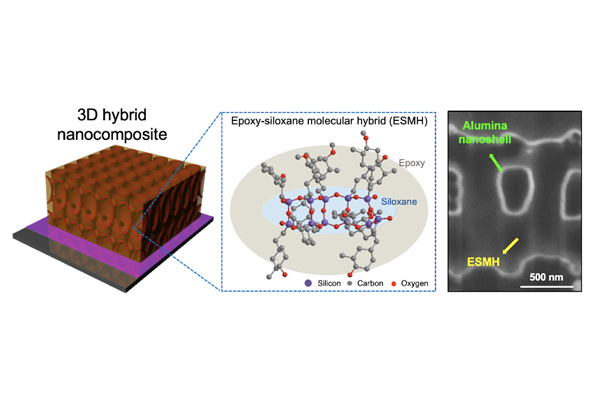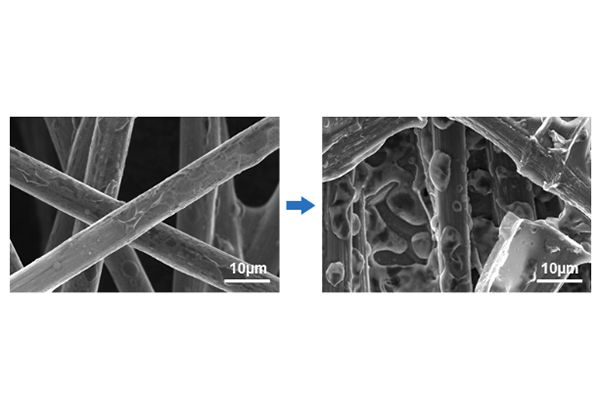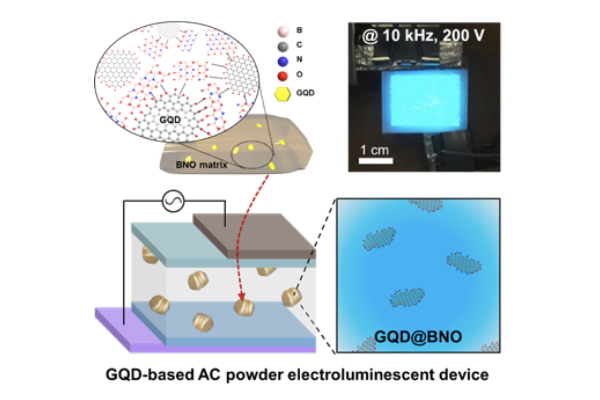-
Research Highlight
Systematic Design Strategies for Nonaqueous Organic Redox Flow Batteries
Prof. Byon’s group (in collaboration with Prof. Joo’s group at Pusan National University) reported the design principle of organic molecules utilized for non-aqueous organic redox flow batteries (RFBs). By implementing an extended -conjugation, a cationic functional group, and selective anions, they developed highly soluble, stable, and crossover-resistant heteroarylpyridinium in the form of organic redox-active molecules and showed ~90% capacity retention during 100 cycles in RFBs. ...read more
-
Research Highlight
3D Periodic Polyimide Nano-Networks for Ultrahigh-Rate and Sustainable Energy Storage
A lithographic strategy to fabricate a 3D periodic nano-network of multi-redox active polyimide is proposed, realizing ultrahigh-rates up to 400C for the lithium-ion storage of an organic anode for the first time....read more
-
Research Highlight
Ultrahard, Yet Flexible Hybrid Nanocomposite Reinforced by 3D Inorganic Nanoshell Structures for Flexible Protective Film
Prof. S. Jeon, B.-S. Bae, S.M. Han, and J.-W. Hong’s groups have developed a nontrivial type of nanocomposite combining organic-inorganic (O-I) hybrid materials with 3D oxide nanostructure. The 3D hybrid nanocomposite film simultaneously achieves superior hardness, optical transparency, and flexibility....read more
-
Research Highlight
Development of semiconductor quantum dot symmetry control technology
Prof. Cho's group succeeded in controlling the triangular symmetry of nitride semiconductor quantum dots for the first time by using a three-dimensional nano-pyramid structure and a self-limited growth method. With precise control of the symmetry of the quantum dots, it would be useful for developing polarization-entangled photon pair emitters....read more
-
Research Highlight
New Lithium Sulfur Battery with Theoretical Capacity over 90%
Professor Hee-Tak Kim, as a project of KI for the NanoCentury, has developed a lithium sulfur battery that realizes 92% of the theoretical capacity and an areal capacity of 4mAh/cm2 simply by exploiting high donor number salt anion....read more
-
Research Highlight
Solution Phase Phosphorus Substitution for Enhancement of Oxygen Evolution Reaction in Cu2WS4
P substitution in Cu2WS4 was found to induce numerous basal plane defects, which increase the active sites for -OH adsorption/desorption and improve efficiency of the oxygen evolution reaction. ...read more
-
Research Highlight
Bright Blue AC-Electroluminescence from Graphene Quantum Dots
Efficient solid-state photoluminescent graphene quantum dots embedded in boron oxynitride (GQD@BNO) was applied to AC powder electroluminescent device for the first time. ...read more
-
Research Highlight
High-Performance Electrochromic Devices from Two-Dimensional WO3 Nanosheets
Professor Seokwoo Jeon’s research team has developed a solution-phase synthesis method of two-dimensional WO3 nanosheets chemically converted from layered WS2 for the first time, to fabricate high-performance and robust electrochromic devices....read more
-
Research Highlight
Precise Core-Position-Control in Core/Shell Semiconductor Nanorods for High Optical Polarization
Professor Doh Chang Lee’s team unveiled the growth mechanism of colloidal semiconductor nanorods (NRs). Atomic-precision control of NR morphologies and structures achieved in the teams’ work is expected to make a shattering impact on a wide range of nanomaterials, particularly in display applications....read more

291 Daehak-ro Yuseong-gu Daejeon, 34141, Republic of Korea
Partnered with KAIST Breakthroughs and KAIST Compass







